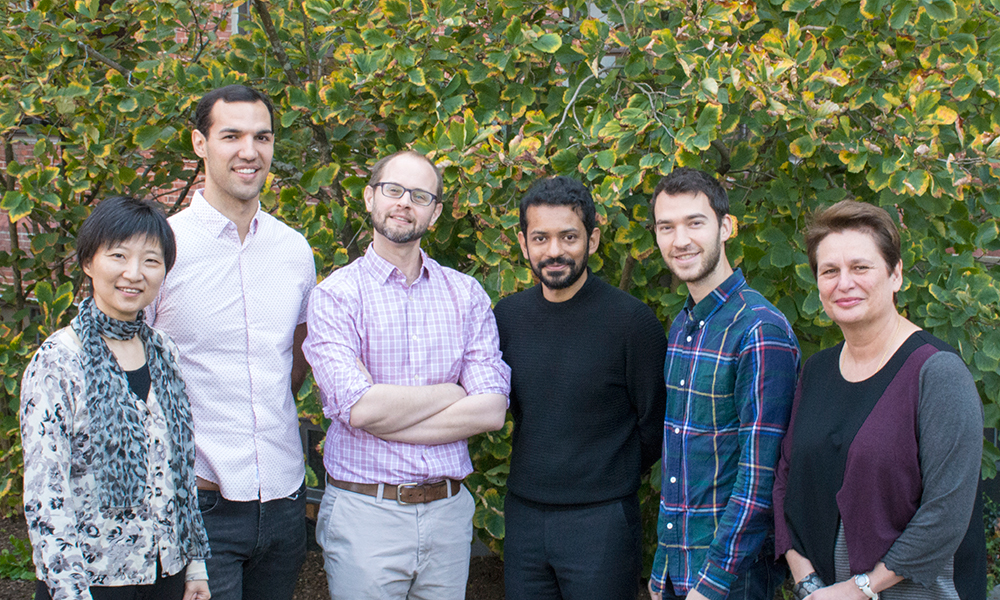A major goal of the abstract expressionist painters was to represent, convey and evoke emotion by reducing the use of color and gesture to their most basic forms. Neuroscientists have embraced a similar reductionist philosophy in attempting to understand how the brain gives rise to behavior. By deconstructing neural circuits to their most basic building blocks- the cell-types that comprise them, we hope to understand how neural activity gives rise to diverse behaviors and emotions. However, the enormous diversity and abundance of neurons in the mammalian brain makes this a challenging task. Moreover, the brain is a highly structured organ, and the ordered arrangement of cell types has been shown to be a critical determinant of function in many parts of the brain. Thus, knowing the identity and location of every cell in the brain is critical to understanding how it functions.
The recent emergence of techniques for massively multiplexed single cell RNA sequencing (scRNAseq) allows for the comprehensive cataloging of cell types according to their gene expression profiles- information that can then be used to assess function. However, a major drawback of these techniques is the loss of spatial information about cell-types. A new technique called MERFISH (Multiplexed Error Robust Fluorescence In Situ Hybridization) developed in the laboratory of Dr. Xiaowei Zhuang overcomes this limitation by multiplexing the quantitative detection of RNA molecules in intact tissue.
In a close collaboration between the Zhuang and Dulac labs, we deployed the combined strengths of scRNAseq and MERFISH to comprehensively catalog and map cell types in a part of the brain called the preoptic region of the hypothalamus- a strategic choice based on its functional and structural diversity. The preoptic region is critical for survival, controlling essential social behaviors such as parenting, aggression and mating, as well as fundamental homeostatic functions such as reproduction, sleep, temperature sensing and thirst. Because these are evolutionarily conserved and stereotyped functions, it is hypothesized that genetically specified or “hard-wired” circuits control their execution- thus providing a genetically tractable model to understand how circuits give rise to function.
We profiled ~1 million cells of the mouse preoptic region in males and females, allowing us to generate a first in kind cell-type atlas of this region, and revealing molecular, spatial and functional principles of its organization. This experiment revealed a surprising diversity of cell types including ~70 neuronal types and several non-neuronal cell types. We used gene expression profiles to generate a taxonomy of related cell types. Our data revealed complex spatial distributions of cell types – some lay within specific anatomical regions, while others dispersed over several regions, perhaps revealing complicated developmental trajectories. Moreover, we found molecular and spatial granularity in cell types previously thought to be functionally singular. Spatial locations of these sub-divided cell types provide novel genetic entry points into functionally relevant neurons.
A major function of the preoptic region is to execute and modulate sex-specific reproductive functions. Reproductive functions rely on the activation of sex hormone and neuropeptide receptors, which are often expressed at levels that are below the detection threshold of traditional methods. MERFISH allowed us to detect all these receptors within diverse cell populations revealing novel topographically constrained principles underlying sex-hormone signaling, which might play a role in the regulation of sexual differentiation and expression of sexually dimorphic behaviors- a hypothesis that can now be systematically tested.
Finally, we combined MERFISH with molecular readouts of neural activity to reveal the neuronal types activated by important social behaviors in male and female animals, including parenting, aggression and mating. We found a complex pattern of cell-type activity with both unique and shared cell types being active in response to different behaviors. Notably, we identified distinct cell populations that were differentially activated in mothers and fathers during parenting, providing insights into how physiological state may affect parental behavior.
In summary, the comprehensive mapping of cell-types allowed us to discover new features of brain organization and function, and to generate new hypotheses about the control of social behaviors and reproduction. The knowledge of gene expression within functionally relevant cell-types provides molecular entry points with high cellular resolution that can now be used to elucidate the brain wide circuits that control behavior. In a sense, like the abstract expressionists, we have taken the first steps to understanding how complex emotions emerge from the basic functional units of the brain.
by Dhananjay Bambah-Mukku (Dj) and Catherine Dulac
Catherine Dulac faculty profile, Dulac lab website



